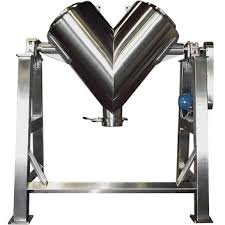SOP for Cleaning of Octagonal Blender

Standard Operating Procedure (SOP)
Here is a Standard Operating Procedure (SOP) for the Cleaning of Octagonal Blender, a commonly used equipment in pharmaceutical manufacturing for mixing dry powders and granules.
1. Objective
To establish a standard method for cleaning the Octagonal Blender to prevent cross-contamination and ensure product quality and GMP compliance.
2. Scope
This SOP applies to the cleaning of all Octagonal Blenders used in the manufacturing department for blending powders and granules.
3. Responsibility
-
Machine Operator: To clean the blender as per procedure.
-
Production Supervisor: To supervise and verify cleaning.
-
QA Personnel: To inspect and approve the equipment post-cleaning.
4. Materials and Equipment Required
-
Purified Water or WFI
-
Approved detergent solution
-
Lint-free cloths or wipes
-
Nylon brush
-
70% IPA (if applicable)
-
PPE (gloves, mask, goggles, apron)
-
Cleaning logbook
5. Procedure
5.1 Pre-Cleaning
-
Switch off the machine and disconnect it from the power supply.
-
Affix a “To Be Cleaned” label.
-
Wear appropriate PPE.
-
Remove any remaining product or powder from the blender and surrounding area.
5.2 Cleaning Procedure
A. Contact Parts (Blender Body, Baffles, Lid, Butterfly Valve):
-
Use a vacuum or dry cloth to remove loose powder.
-
Wash all contact parts with purified water and a mild detergent using a brush.
-
Rinse thoroughly with purified water to remove detergent.
-
If required, wipe with 70% IPA and allow to air dry.
-
Inspect to ensure no residue remains, especially around baffles and gaskets.
B. Non-Contact Parts (Frame, Motor Housing, Exterior):
-
Wipe down with a cloth dampened with purified water or IPA.
-
Avoid any water or solution near the motor and control panel.
5.3 Post-Cleaning
-
Dry all cleaned parts using lint-free cloth or air drying.
-
Reassemble all parts securely.
-
Affix a “CLEANED” label with date, time, and signature.
-
Record cleaning details in the cleaning logbook.
-
Submit equipment for QA inspection and approval.
6. Precautions
-
Never splash water near motor or electrical components.
-
Ensure complete removal of product residues before wet cleaning.
-
Use only approved cleaning agents.
-
Ensure all parts are dry before reuse.
🎓 Discover one of the best Pharmaceutical Production courses available — click below to explore the course that’s shaping future Production skills.

